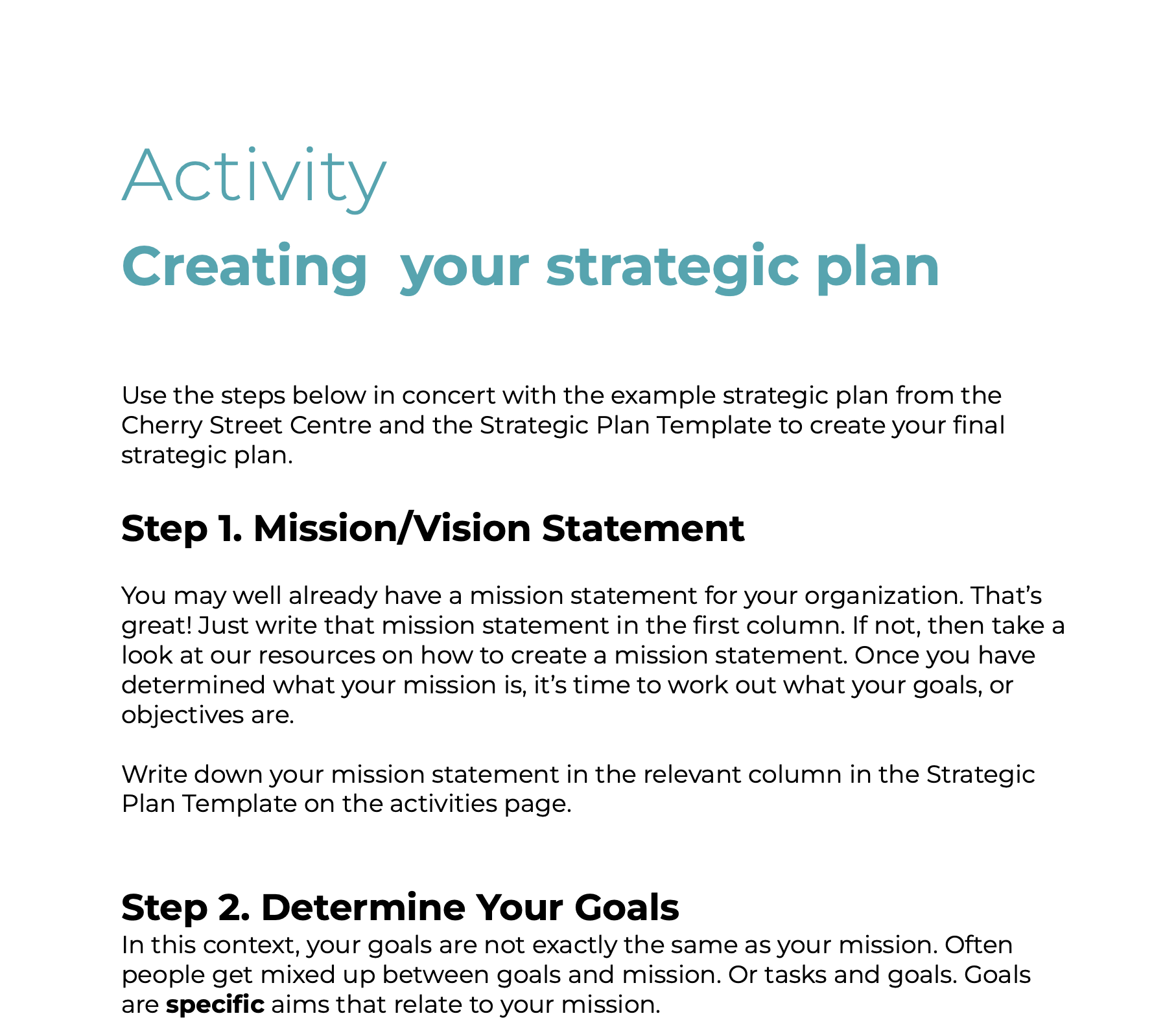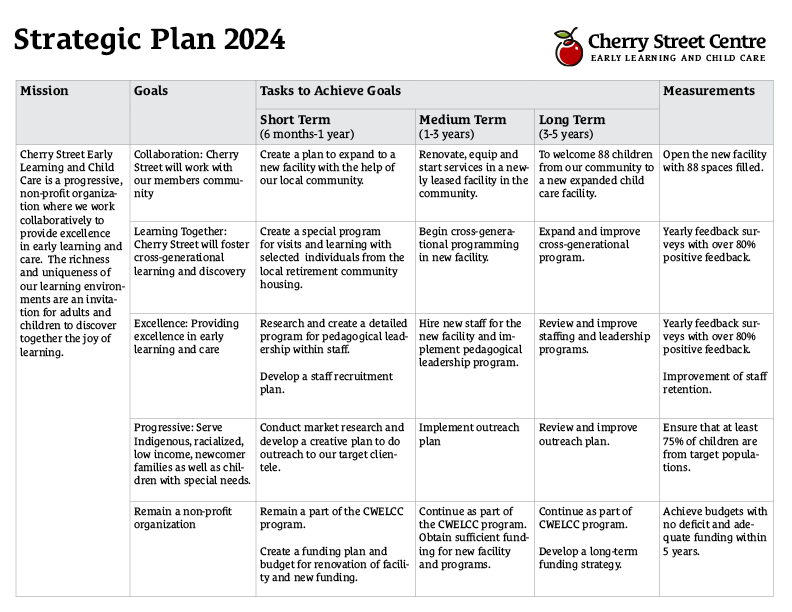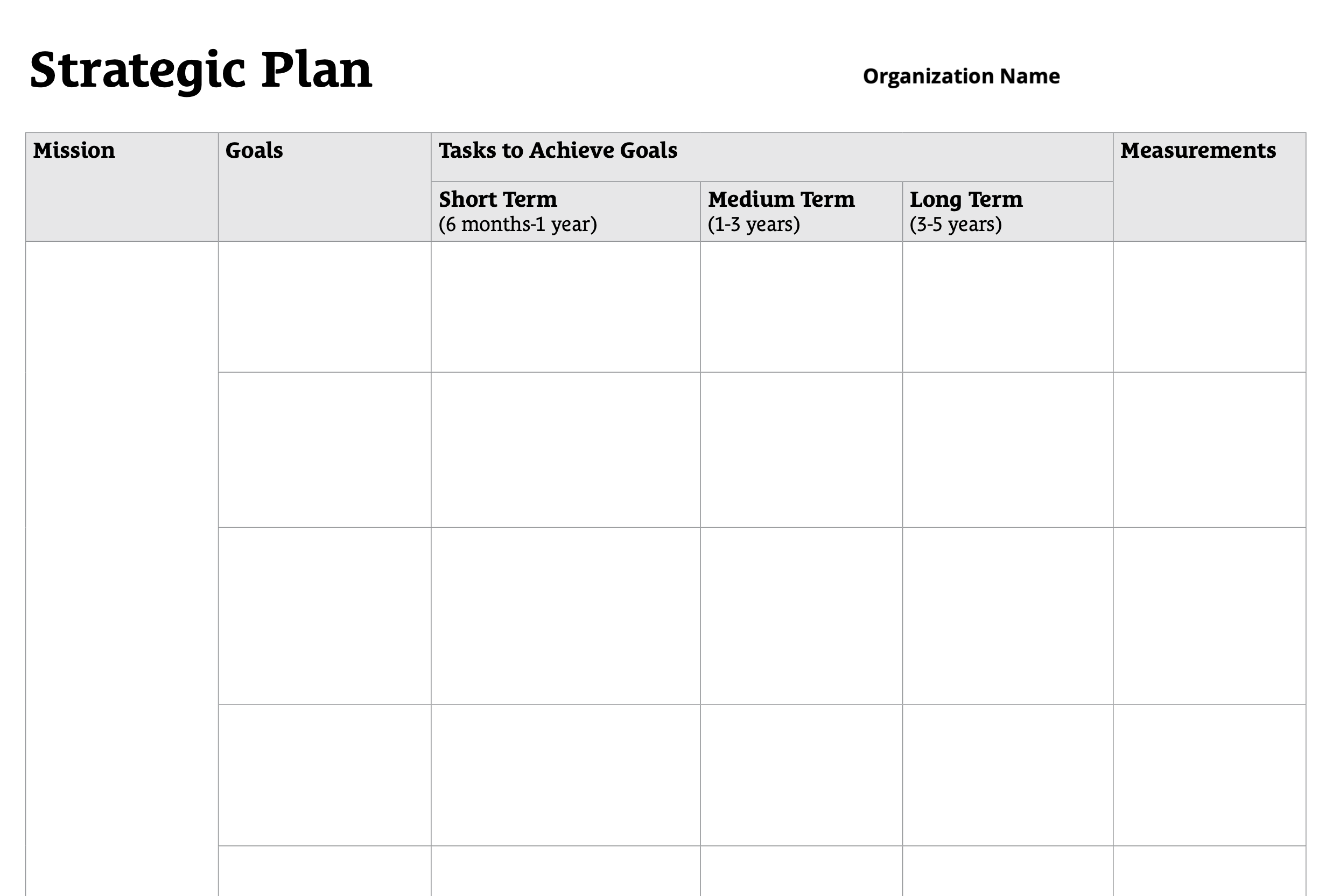Strategic planning:
Strategic planning can provide immediate benefits including those listed below.
Engage an impartial person to lead your strategic plan process. Gather information, thoughts, and opinions from stakeholders about your organization.
Use your stakeholders to determine the general direction for your organization. Ensure that you understand and appreciate the differing perspectives of people in your organization. Ensure that your strategic plan reflects a consensus and diversity of opinion.
There are some ways to get input from different groups and you’ll have to decide the methods that work best for you.
Next you need to actually write the strategic plan.
At the end of this process, you will have a strategic plan that can chart the direction of your organization over the next 5 years.
Get detailed instructions in our activity document “Creating Your Strategic Plan”
As a part of the Toolkit, you will be working on exercises, writing, figuring and in the end creating a plan for your expansion project.
Throughout the module, in the sections called “Activities”, we will have worksheets, exercises and activities to help you create that plan.

This quick instruction sheet explains, step-by-step how to write a strategic plan.

Take a look at the strategic plan of our model centre to see an example of what a strategic plan might look like.

You can download and fill in this template to create your organization’s strategic plan.
Find out about child care expansion news, how B2C2 can help you, and everything about child care expansion in Ontario.